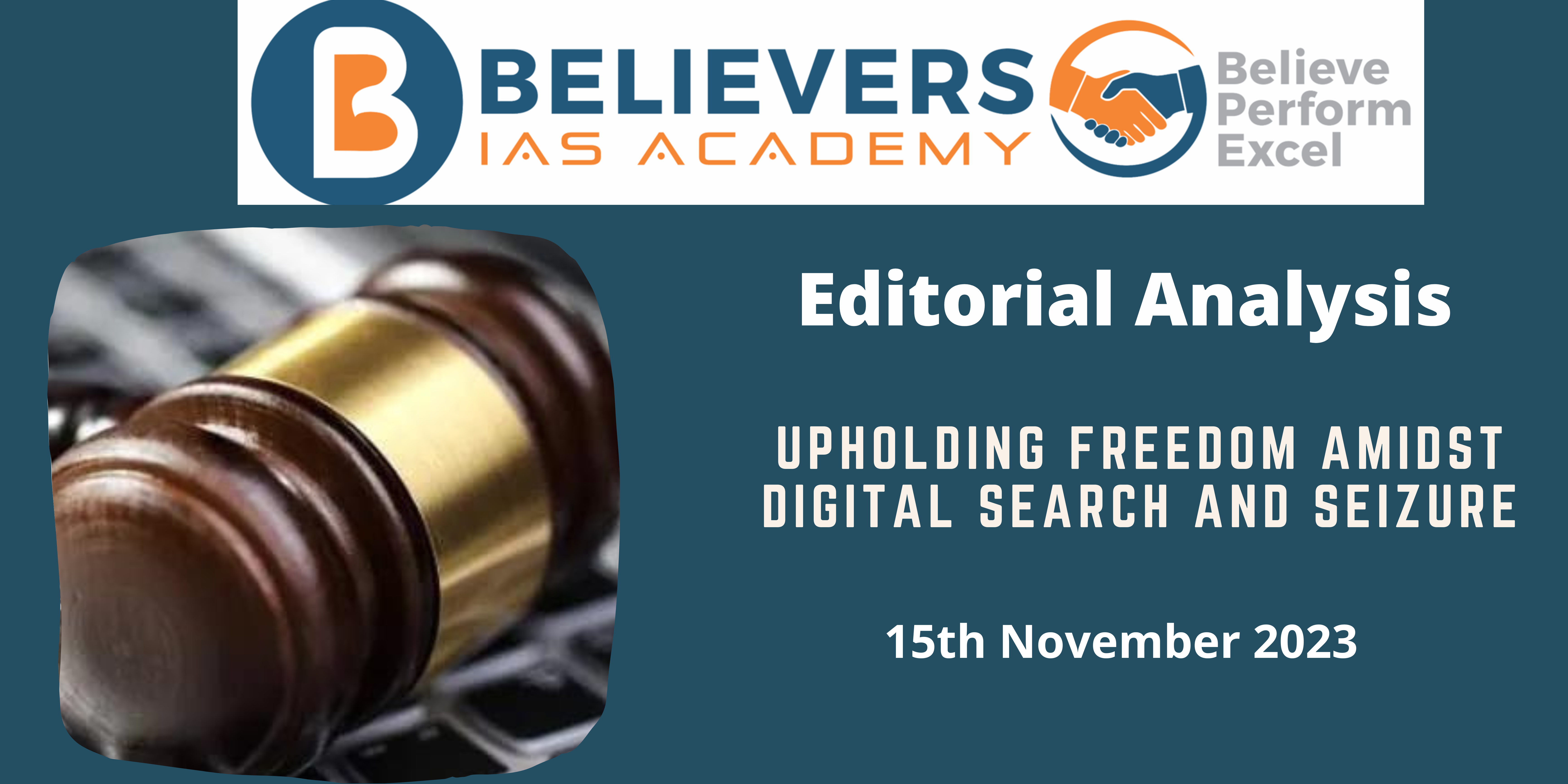Upholding Freedom Amidst Digital Search and Seizure
Context:
The recent directive from the Supreme Court urging the Union government to establish guidelines safeguarding the rights of media professionals in the face of digital device seizures marks a pivotal moment. Instances of journalists facing device seizures and scrutiny send ripples of concern not only through the journalistic community but also impact whistleblowers and confidential sources.
Relevance:
GS – 2 (Fundamental Rights, Indian Constitution)
Prelims:
Editors Guild of India, Press Council of India (PCI), World Press Freedom Index (WPFI).
Mains Question:
Evaluate the impact of recent digital device seizures on media freedom and the right to livelihood. Discuss the necessity for guidelines to regulate the search and seizure of journalists’ devices, balancing law enforcement needs and individual rights. (250 words)
Dimensions of the Article:
- The Chilling Effect on Media Professionals
- Protocols for Data Protection
- Transparent Drafting and Public Consultations
- Adapting Laws to Digital Realities
The Chilling Effect on Media Professionals:
- Recent actions against journalists, involving the confiscation and examination of their laptops and smartphones, have created a chilling atmosphere within the media fraternity. This not only stifles journalistic endeavors but also instills fear among whistleblowers who rely on confidentiality assurances.
- The seizure of communication devices based on vague allegations poses a significant threat to the freedom of the press. Journalists, in the pursuit of their professional duties, encounter hindrances that compromise the integrity of their work. As digital devices become indispensable tools, the impact on journalistic freedom reverberates widely.
- Guidelines must establish a prerequisite for law enforcement agencies – obtaining a judicial warrant before seizing or searching devices. This ensures a clear delineation of information sought, preventing unwarranted and expansive searches that may infringe on individual privacy and compromise journalistic sources.
- Journalists should not be compelled to self-incriminate or reveal their sources by providing passcodes or biometric data.
- The guidelines must explicitly protect individuals from such coercive tactics, safeguarding the journalistic profession’s ethical standards.
Protocols for Data Protection:
- To prevent unauthorized leaks or tampering with data, robust protocols must be in place. This includes measures to avoid the dissemination of irrelevant data to third parties and the timely deletion of data unrelated to the ongoing investigation.
- Technological interventions like device cloning can facilitate uninterrupted journalistic work during investigations.
Transparent Drafting and Public Consultations:
- Recognizing the need for a “balancing of interests,” the guidelines must be formulated transparently, incorporating public consultations.
- The involvement of stakeholders ensures a comprehensive perspective, considering the delicate balance between law enforcement necessities and individual rights.
Adapting Laws to Digital Realities:
- Beyond guidelines for media professionals, there is a pressing need to update existing laws governing search and seizure by law enforcement agencies.
- Incorporating provisions that align with the digital landscape becomes imperative to address evolving challenges.
Way Forward:
- The guidelines must meticulously balance law enforcement needs with the protection of individual rights. A judicious approach is required to ensure that the investigative process remains effective without compromising the essential principles of a free press.
- Transparent drafting of guidelines, coupled with inclusive public consultations, is essential. This ensures that the regulations reflect a consensus that respects the rights of journalists and the broader citizenry. The guidelines should stand as a testament to a democratic and participatory process.




